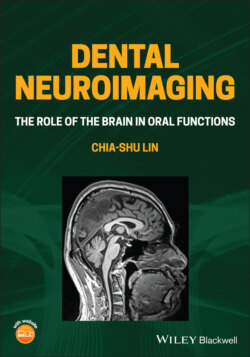Читать книгу Dental Neuroimaging - Chia-shu Lin - Страница 34
1.2.3.3 Non‐invasive Methods – Different Sources of Brain Signals
ОглавлениеIn contrast to structural neuroimaging, functional neuroimaging focuses on the brain signals associated with mental functions. These function‐focusing methods can be categorized into two broad domains. Firstly, EEG and MEG are the methods that directly assess the magneto‐electrical signals from the brain. Both methods rely on the use of an array of strategically deployed sensors on the surface of one's head to collect weak magneto‐electrical signals from the brain. Both methods focus on the magnetic/electrical events of neural activity associated with mental functions. Secondly, PET and fMRI are the methods that assess the metabolic events of the brain, which can be inferred as a surrogated index of neural activity (Gazzaniga et al. 2019). PET assesses the change in metabolic events associated with cerebral blood flow (CBF) by detecting the dynamics of the radioactive‐labelled tracer injected into subjects. fMRI, in contrast, detects the change of the proportion between the oxygenated and deoxygenated haemoglobin as a metabolic index, which is indirectly associated with the change of neural activity (see Chapter 2). Notably, both methods focus on quantifying the relative change of brain signals between different conditions (e.g. when subjects perceive painful vs. non‐painful stimuli). Therefore, the PET and MRI signals do not assess absolute metabolic activity and may not be interpreted as the actual level of neural activity (Gazzaniga et al. 2019).
